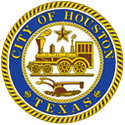- What do the Walkable Places Program and Transit-oriented Development standards try to achieve?
- What are the difference between the Walkable Places Program and Transit-oriented Development standards?
- Do the Walkable Places and Transit-oriented Development rules regulate land uses? What do these rules regulate?
- When will Walkable Places and Transit-oriented Development rules apply?
- Can property owners request variances from the Walkable Places and Transit-oriented Development rules?
- Are there any height restrictions for development along the designated WP Streets and TOD Streets?
- Are there any rules to minimize the negative impact on the single family residential houses which are created by high-rise development along the designated WP Streets and TOD Streets?
- How can residential neighborhoods address potential overflow parking from the development along the designated WP Streets and TOD Streets?
- Will on-street parking be available along the designated WP Streets and TOD Streets?
- Who is responsible for sidewalk construction and maintenance along the designated WP Streets and TOD Streets?
- Are seating/dining areas allowed within the pedestrian realm along the designated WP Streets and TOD Streets?
- Are the existing power poles/fire hydrants/ utility boxes obstructing the sidewalk required to be relocated?
Houston is becoming denser and attracting more high-density development. These two programs will encourage that development to be pedestrian friendly and ensure that our city grows responsibly and sustainably.
While either the City of Houston or a property owner may propose the designation of a Walkable Place, the City designates TOD Streets by evaluating each qualified transit station with a series of objective criteria. And, a Walkable Place may be designated anywhere in the city, whereas a TOD Street may be designated only if it is within half mile walking distance of a qualified transit station.
The Walkable Places and Transit-oriented Development rules do not regulate land uses. Instead, they regulate several types of design elements to promote safe, pleasant walking experiences for pedestrians of all ages, identities, and abilities. For details of the specific rules, please refer to Users’ Guide for Walkable Places and Transit-oriented Development.
These rules will only apply to new development and some redevelopment along the designated Primary Streets. Development along the designated Secondary Streets may choose to opt into the rules or follow the existing standard rules. They will not apply to development that already exists. However, when changes are made to the existing development, the related standards will apply. For details of the development scenarios that trigger the rules, please refer to Page 45 on the Users’ Guide for Walkable Places and Transit-oriented Development.
If strict compliance with the applicable Walkable Places/TOD Standards creates undue hardship or impractical development, property owners or developers may apply to the Planning Department for standard modifications. The Planning Department will coordinate with City Engineer and Mayor's Office of People with Disability Officer to evaluate each application.
Neither of the two programs regulate height for development in the city.
The Residential Buffering Standards in Sec 42-271 and 272 of City of Houston Code of Ordinance regulate certain development greater than 75 feet in height. These rules do not apply to new development located on the Major Thoroughfares.
The Administration & Regulatory Affairs Department provides several parking permits to address potential parking issues in residential neighborhoods. For details of the parking permit tools, please visit https://www.houstontx.gov/parking/permits.html.
The Walkable Places and Transit-oriented Development rules preserve more on-street parking spaces for the public by regulating the number and dimensions of driveway cuts along the designated WP Streets and TOD Streets.
Property owners or developers are responsible for the construction and maintenance of the sidewalks abutting their properties. This policy applies to sidewalks along all public streets in the city limit.
As long as the seating/dining areas are located outside the required minimum unobstructed sidewalk, they are allowed within the pedestrian realm along the designated WP Streets and TOD Streets. If the proposed seating/dining areas are located in the public right-of-way, the property owners or developers will be required to file an application for a Sidewalk Café Permit with Houston Public Works.
No obstructions are allowed within the required minimum unobstructed sidewalks. The existing obstruction(s) shall be relocated outside the required minimum unobstructed sidewalk, or the unobstructed sidewalk shall bypass the existing obstruction(s). This may require putting the sidewalk on private property.

